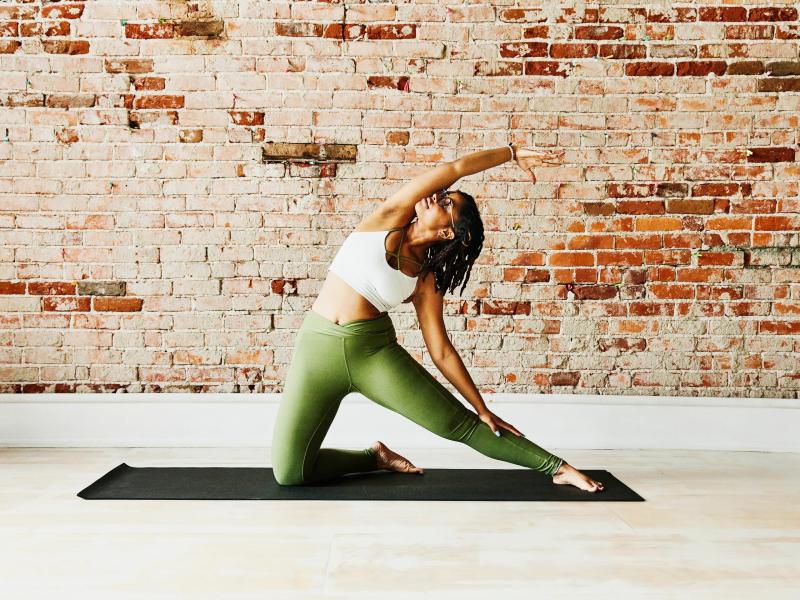Pilates and Yoga are both popular forms of exercise that offer numerous health benefits, but their philosophies, focus, and techniques are very different. The ancient Indian practice of Yoga aims to unite the mind, body, and spirit. The practice typically consists of sequences of poses, or “asanas,” as well as profound breathing techniques, meditation, and ethical disciplines. Yoga promotes flexibility and strength, relaxation, stress management, and a spiritual connection to oneself and the world.
Joseph Pilates developed Pilates in the 20th century, making it a relatively modern physical fitness system. It focuses predominantly on core strength, overall conditioning, and correct posture. Pilates exercises frequently involve specialized apparatus, such as the Reformer, emphasizing controlled movements that develop muscle tone and enhance balance and flexibility. While it also promotes mind-body connection, spiritual or meditative elements are absent. Yoga emphasizes mental, physical, and spiritual health, whereas Pilates focuses on abdominal strength, body control, and conditioning. Your decision depends on your fitness objectives, interests, and preferences.
What is Pilates?
Pilates, or the Pilates Method, is a form of physical exercise created by Joseph Pilates in the early 20th century. It’s meant to help you get stronger, more flexible, more balanced, and more aware of your body. Pilates is all about building strength in the middle of the body. In Pilates, the core muscles, which include those in the stomach, lower back, and hips, are considered the body’s engine. Many workouts are done while lying down or sitting, and most are low-impact and involve some weight-bearing.
Pilates exercises can be done on a mat, like Yoga, or on special tools like the Reformer, which uses springs to help tone and strengthen the body in different ways. The movements are exact and controlled, and there is a lot of focus on the right way to breathe, stand, and move. Physical therapists and other health workers often use Pilates exercises to help people recover from injuries. They can also be changed so people of all exercise and skill levels can use them. In a nutshell, Pilates is a flexible exercise method that can work out your whole body, improve your posture, and make you more aware of how your body moves and what it can do.
What is Yoga?
Yoga is an old practice that began more than 5,000 years ago in India. The discipline focuses on the mind, body, and spirit. It does this by combining physical poses (called asanas), breathing methods (called pranayama), and meditation (called dhyana). Yoga is more than just a set of exercises; it is also a trip through philosophy and spirituality. Its main goal is to help people find peace within themselves and learn more about themselves. It also promotes general well-being and awareness.
In the West, the physical part of Yoga might be the most well-known. The asanas are meant to help you become more robust, flexible, and balanced. The moves can be gentle and relaxing, like in Hatha and Restorative Yoga, or more intense and complex on the body, like in Ashtanga or Power Yoga.
Pranayama, or breath control, is an integral part of the exercise. Yoga helps calm the mind, deal with stress, and improve mental clarity by making you focus on your breath. Meditation is another essential part. It helps people be more aware and calm, making them feel more connected to themselves and the world. In conclusion, Yoga is a complete exercise that improves physical health, emotional balance, and spiritual growth. It is a holistic way to stay healthy.
Difference Between Pilates and Yoga
Pilates and Yoga are mind-body activities, although they came about in different ways and have different foci. Yoga is an ancient Indian practice that consists of a series of physical postures, breathing exercises, and meditation designed to increase physical and mental well-being. Pilates, a creation of the 20th century, is a method of exercise that emphasizes the development of a strong core, general physical fitness, and proper posture by using a variety of apparatus. Yoga has a spiritual component and a more holistic approach. In contrast, Pilates focuses on physical training and core strength but does not have a spiritual part, both of which improve body awareness and wellness. Which one you choose will depend on your interests and fitness objectives. We’ve outlined the primary distinctions between Pilates and Yoga below.
Origin
Pilates was developed in the 20th century by Joseph Pilates, but Yoga has its roots in India and dates back more than 5,000 years.
Philosophy
To achieve this goal of balancing the mind, body, and spirit, Yoga has a broader philosophical and spiritual component. Pilates, however, focuses solely on the body and includes no spiritual part.
Breathing
In Yoga, slow, deliberate breathing is emphasized, and movement frequently follows the breath. Breath control is also emphasized in Pilates, albeit in this practice, it is commonly related to the tempo of the exercise and the emphasis on the abdominals.
Equipment
Pilates routinely uses unique equipment, such as the Reformer, Cadillac, and Wunda Chair. Props such as blocks and straps can be used in Yoga, but a mat is necessary.
Focus
Core strength, alignment, and muscular toning are Pilates’ primary focuses. Yoga encourages adaptability, equilibrium, and body, mind, and spirit integration.
Movements
In Yoga, you have to stay in one position while you breathe. Instead of holding still poses, Pilates emphasizes controlled, fluid movements.
Progression
Sequences and modifications are common in yoga classes. A set order of the exercises performed in a Pilates class typically exists.
Mindfulness
Mind-body integration is the goal of both therapies. However, Pilates typically does not incorporate meditation like Yoga, a great way to focus inside and unwind.






